COMPOSITION OF BLOOD AND ITS FUNCTIONS
Tuesday, 23 May 2017 18:41The blood is red in color and circulates in the body like a river. The blood consists of a homogenous fluid called plasma constituting 55% and the remaining 45% by three types of blood corpuscles.
PLASMA
- The plasma of the blood consists of 90% of water and remaining 10% is constituted by organic and inorganic substances.
- The organic substances are plasma proteins, glucose, urea, creatinine, aminoacids, lipids, antibodies, vitamins, enzymes, Antitoxins, chlolestrol etc.
- The plasma proteins are fibrinogen, albumins and globulins.
- The inorganic substances constitute Na, K, Mg, Cl ~ HPO4, HCO3 etc.
- The plasma is slightly saltish and possess a pH of about 7.2.
PLASMA - FUNCTIONS
- The plasma maintains acid base equilibrium of the blood.
- The fibrinogen of plasma brings about coagulation of blood.
- Albumins and globulins help in retention of water in the plasma, by their osmotic effect and are also protective in function.
- A fall in the level of these proteins leads to the filtering out of excessive volumes of water from the blood into the tissues, leading to edema.
Red blood cells or Erythrocytes (RBC)
- The red blood cells are biconcave circular and enucleated.
- The cell organelles like Golgi apparatus, mitochondria, RNA, centriole are present.
- The average diameter is 7.5 u . The average number of RBC is about 5 million/mm3 of blood.
- The number of R.B.C. increases in acute exercises and high altitutes.
- The red blood cells consists of a respiratory pigment called Haemoglobin.
- It is a conjugated protein composed of a protein called globin, united to a prosthetic group called haeme. Haeme is a porphyrin derivative and consists of four iron atoms.
- The amount of haemoglobin will be 14-16 gm/100 ml of blood.
- The oxygen combines with haemoglobin to form oxyhaemoglobin in the form of which it is transported to different tissues of the body.
- Oxyhaemoglobin is dissociated at tissue level to release oxygen into tissues and retaining haemoglobin in the blood.
- Carbon dioxide is also transported in the blood in the form of carbamino compounds when combines with heamoglobin.
- The life span of R.B.C. is 120 days.
- The spleen helps in trapping the old cells and broken fragments.
- The dead cells are disposed by macrophages present in the liver, bone marrow and spleen.
- The haemoglobin of dead R.B.C. is also broken down into haeme and globin.
- The iron is liberated from the haeme and once again used in the formation of R.B.C.
- The development of R.B.C. is called erythropoiesis. In the foetus the liver, red bone marrow and spleen are centres for the formation of R.B.C.
- After birth they are developed exclusively from red bone marrow.
- The red bone marrow consists of precursors of R.B.C. like proerythroblasts or haemo erythroblasts, which transform into erythrocytes. The vitamins B12 and folic acid are necessary for erythrocyte production.
- Decrease in the total count of RBC causes anaemia and the increase in RBC causes polycythemia.
White blood cells or Leucocytes
- The white blood cells are larger than R.B.C. but they are few in number.
- They are nucleated blood cells. The ratio of red cells to white blood cells is 600 to 1.
- The number of leucocytes varies from 5000 to 9000/mm3 of blood.
- The number increases at times of stress and pain.
- The increase in the number of leucocytes is called Leucocytosis.
- In certain diseases the leucocytes decrease in number.
- The reduction in the leucocyte count below the normal level is called Leucopenia.
- Abnormal increase in the number of leucocytes with plenty of immature cells is called Leukemia.
- The W.B.C. are of two types basing on the nature of cytoplasm and nucleus.They are
1. Granula leucocytes and
2. Agranular leucocytes.
- Granular leucocytes are provided with granular cytoplasm and lobed nucleus.
- Hence they are called granularpolymorphonuclear leucocytes.
- They constitute upto 64.7% of the total leucocytes. The granular leucocytes are divided into three types basing on staining properties.
They are
i. Neutrophils
ii. Eosinophils and
iii. Basophils.
I. Neutrophils:
- The neutrophils constitue about 62% of the total leucocytes.
- The nucleus is many lobed. They are phagocytic in function.
- They protect the body against infection, hence they are called Microscopic policemen.
II. Eosinophils or Acidophils:
- They consitute upto 2 .3%. The nucleus is bilobed.
- They help in destruction of foreign bodies and toxins produced from them.
- They are stained with acidic dye like eosin.
- During infection their number increases and this condition is called eosinophilia.
- Decrease in the total count of eosinophils is called eosinopaenia.
III. Basophils:
- These cells constitute upto 0 .4%. The cytoplasm consists of bluish-black granules of variable size.
- They are stained with alkaline dye like methylene blue. Nucleus is bilobed or ribbon-like.
- It is beleived that they are transported to tissues where they become mast cells.
Agranular leucocytes are without granules in the cytoplasm. The nucleus is single. Hence they are called Agranular polymorphonuclear leucocytes. They constitute upto 35.3% of the total leucocytes. Agranular leucocytes are two types.
I. Lymphocytes and
II. Monocytes.
I. LYMPHOCYTES:
- The lymphocytes are round, nongranular with large nucleus.
- They constitute about 27% of the total leucocytes.
- The lymphocytes are of two types namely (a) B-lymphocytes and (b) T- lymphocytes.
- They protect the body against infection by producing antibodies.
II. Monocytes:
- These are larger leucocytes with a horse-shoe shaped nucleus that is eccentrically situated.
- These cells constitute 5.3% of the leucocytes and are phagocytic in function.
- They clean the blood from debris. Hence they are called Internal scavangers.
- The development of leucocytes is called Leucopoiesis.
- In the embryonic stage the leucocytes are derived from the mesodermal cells.
- In the adult the granulocytes are produced exclusively from the red bone marrow.
- The lymphocytes and monocytes are developed from the lymphoid tissues of the body and to some extent from the bone marrow.
- The primitive white blood cells present in the bone marrow are called Myelocytes.
- These are precursors of white blood cells. The life span of W.B.C. is one day.
Blood Platelets
- Platelets are small colourless bodies which are spherical, oval or rod shaped.
- They measure upto 2.5 u- in diameter. Their number varies from 2,50,000 to 5,00,000/mm3.
- The gaint cells or megakaryocytes in red bone marrow are broken down into pieces called blood platelets.
- The life span of platelets is few days. They are destroyed in the spleen.
- The blood platelets produce thromboplastin that helps in coagulation of blood.
- They also help to close the vascular wounds by forming platelet plug.
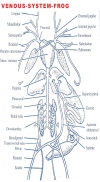
COMPARATIVE ANATOMY: VENOUS SYSTEM OF FROG (AMPHIBIAN) AND RABBIT (MAMMAL)
Tuesday, 23 May 2017 18:14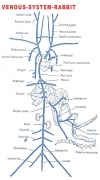
VENOUS SYSTEM OF RABBIT
Monday, 22 May 2017 19:01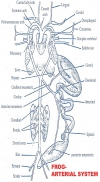
COMPARATIVE ANATOMY: ARTERIAL SYSTEM OF RABBIT AND FROG
Monday, 22 May 2017 17:40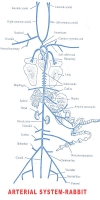
ARTERIAL SYSTEM OF RABBIT
Monday, 22 May 2017 16:50
COMPARATIVE ANATOMY: HEART OF RABBIT AND FROG
Sunday, 21 May 2017 20:07
CIRCULATORY SYSTEM OF RABBIT
Sunday, 21 May 2017 19:13
BREATHING AND MECHANISM OF GAS EXCHANGE RESPIRATION IN RABBIT
Sunday, 21 May 2017 18:01
RESPIRATORY SYSTEM AND ORGANS IN RABBIT
Sunday, 21 May 2017 16:30
COMPARATIVE ANATOMY: RABBIT AND FROG DIGESTIVE SYSTEMS
Saturday, 20 May 2017 19:35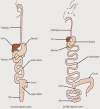
DIGESTION PROCESS
Saturday, 20 May 2017 18:47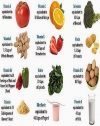
VITAMINS AND MINERALS
Saturday, 20 May 2017 08:44
NUTRITION
Friday, 19 May 2017 21:37
DIFFERENCES BETWEEN CARBOHYDRATES, PROTEINS AND FATS (LIPIDS)
Friday, 19 May 2017 20:56
HISTOLOGY OF ALIMENTARY CANAL
Friday, 19 May 2017 08:02
DIGESTIVE GLANDS IN RABBIT
Friday, 19 May 2017 07:44
